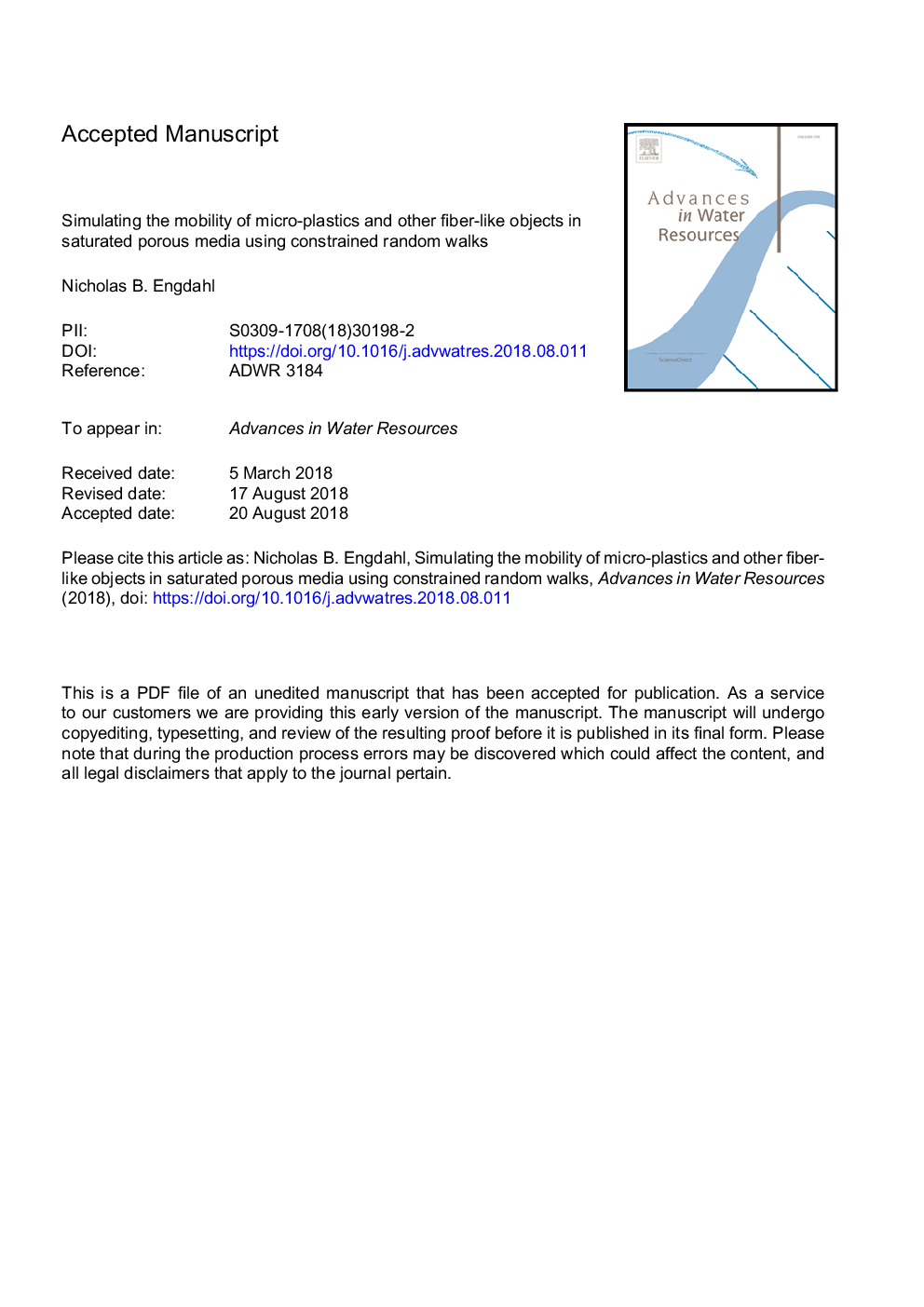| Article ID | Journal | Published Year | Pages | File Type |
|---|---|---|---|---|
| 10117731 | Advances in Water Resources | 2018 | 33 Pages |
Abstract
This article details an approach for modeling the motion of large, flexible, fiber-like colloids, including micro-plastic fibers, through porous media. Fibers and other fiber-like colloids, such as bacteria, have unique shapes and properties that make modeling them more difficult than dissolved solutes, and necessitate unique tools. The approach uses the concept of a bead-rod chain to discretize the fibers as discrete objects that move through the flow field. Each node of the chain is moved independently via a classical random walk but we enforce the constraint that the length of the fiber cannot change over time, which effectively adds a force balance to the random walk problem. After a brief illustrative example, our main question evaluates some of the tradeoffs between pore-water velocity, fiber length, and the size of the pore spaces in a 4Â cm by 12Â cm synthetic model of pore-scale flow in granular material. We find that fiber length is generally correlated to retardation, relative to a passive tracer, and the magnitude of retardation tends to increase with increasing average pore-water velocity. However, the simulations also show that, in some cases, fibers shorter than the average pore-opening can pass through the experiment faster than a solute. This alludes to the complexities and sometimes counter-intuitive nature of the transport behavior of discrete, non-dissolved objects through porous media, which merit experimental study in the future to validate our results against experimental data and to refine the proposed hypothesis testing platform.
Keywords
Related Topics
Physical Sciences and Engineering
Earth and Planetary Sciences
Earth-Surface Processes
Authors
Nicholas B. Engdahl,
